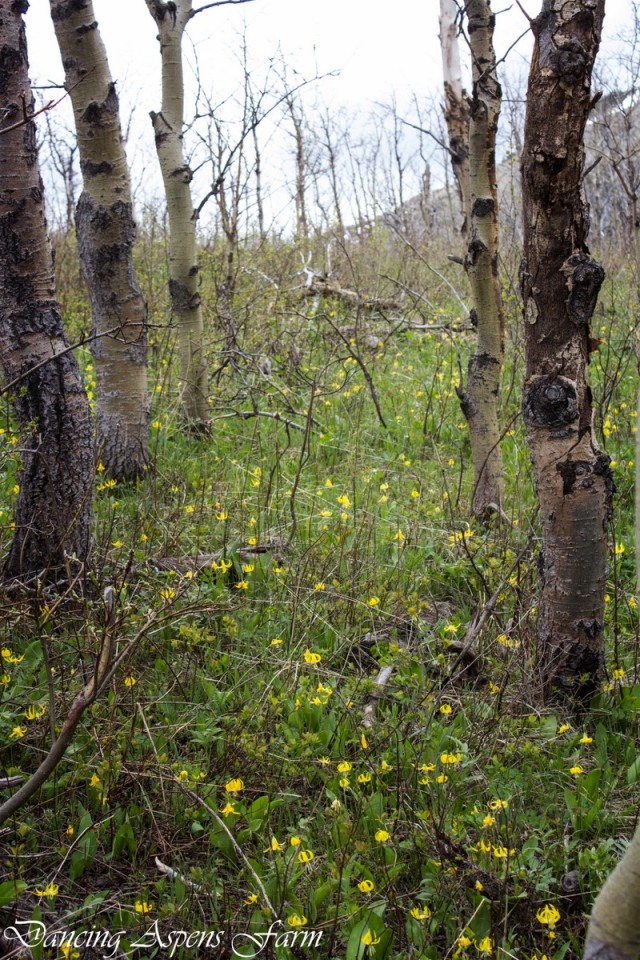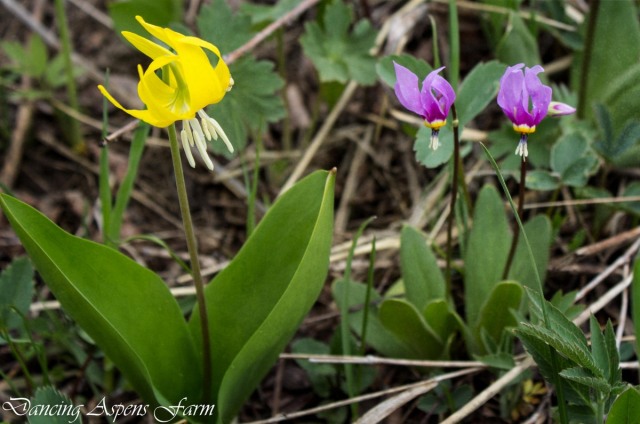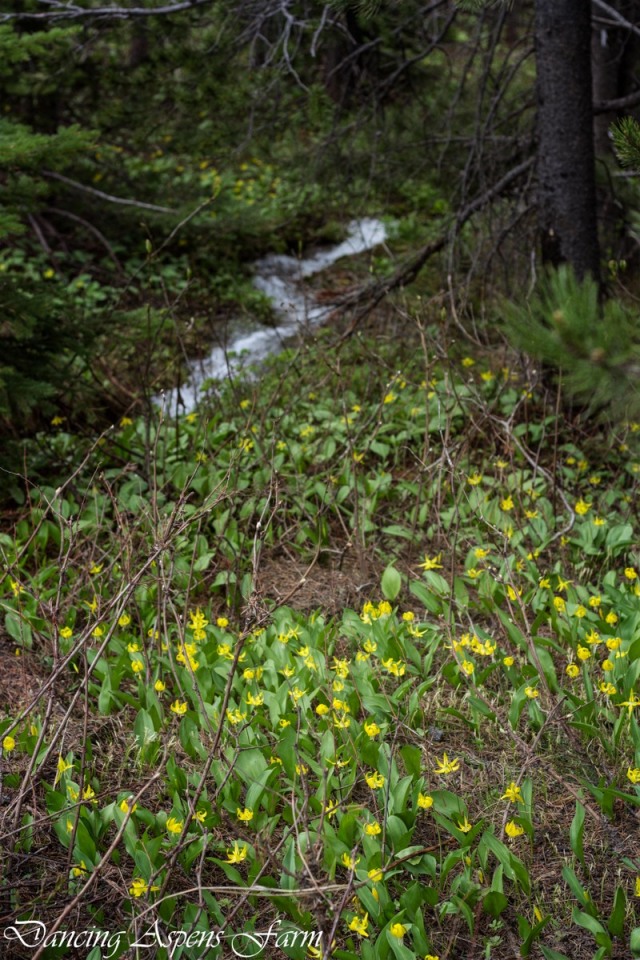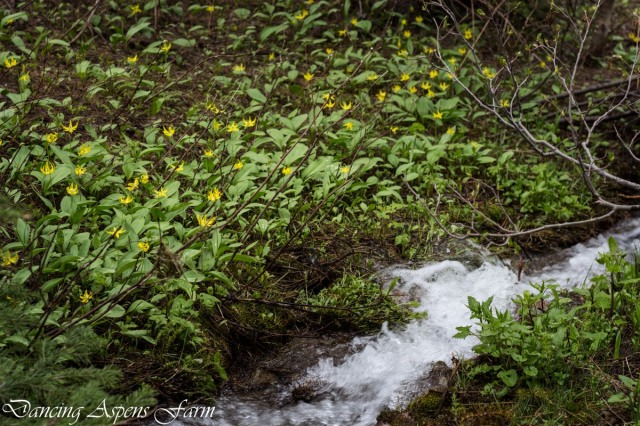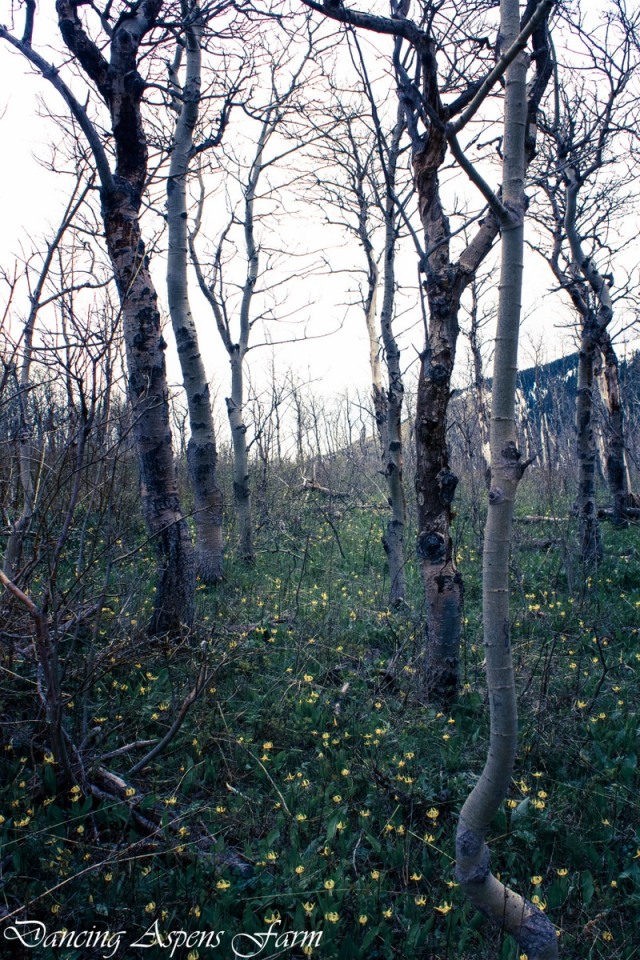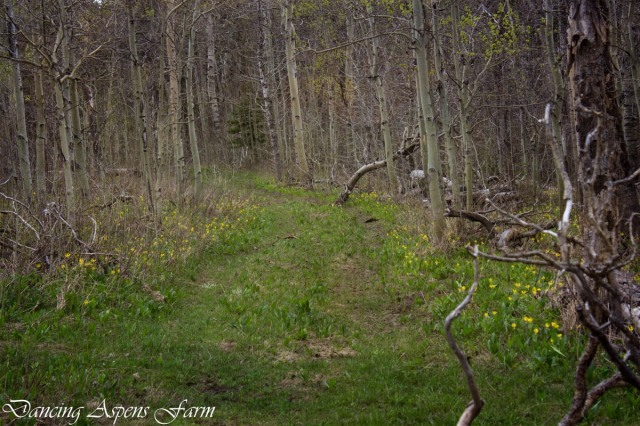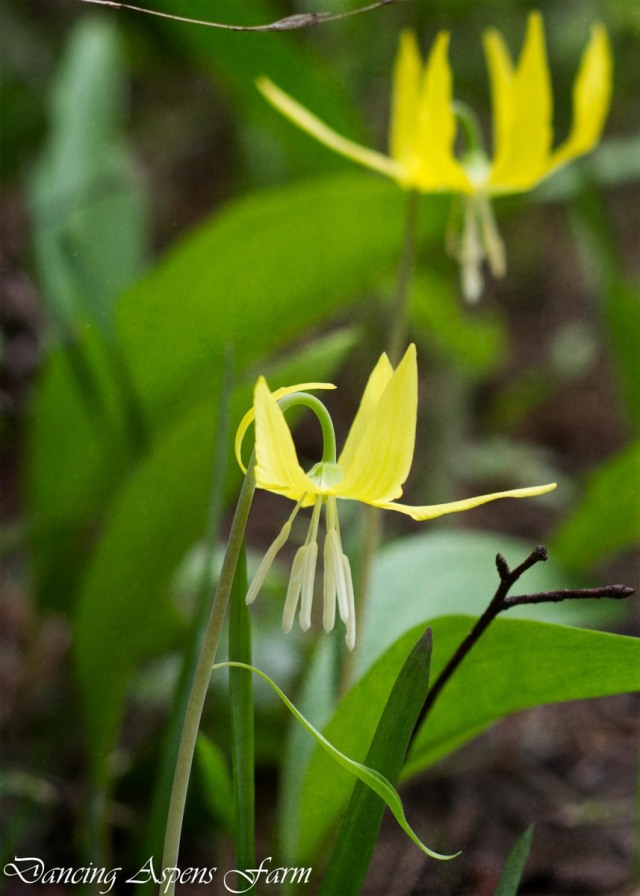Our crew headed to Many Glaciers this past weekend. We ended up hitting a pointy rock, popping a tire and having a flat, then after changing the tire and making it the rest of the way to Many Glacier it started to pour buckets and didn’t see any wildlife and couldn’t even get out of the car without getting soaked, so no hikes. We decided we would head back home and then the kids ended up getting hungry, so we stopped a ways away in Two Medicine. It was just cloudy there and we were able to enjoy a nice little picnic and do a little hiking and spotted many wildflowers and even a black bear.
At Two Medicine Lake, Glacier National Park…
On our little walk we discovered these gems. A lot of these I’m not sure what they are… …


A Fairy Slipper, Calypso bulbosa…
Western Virgin’s Bower… Clematis occidentalis 

At the end of the hike was Running Eagle Falls, running at full bore. Normally it’s just pouring out the cave in the middle of the falls…
Crossing the bridge…
The kids showing off their heart-shaped rocks…

We also spotted a Black Bear…
Dancing Aspens…


































































